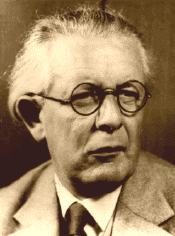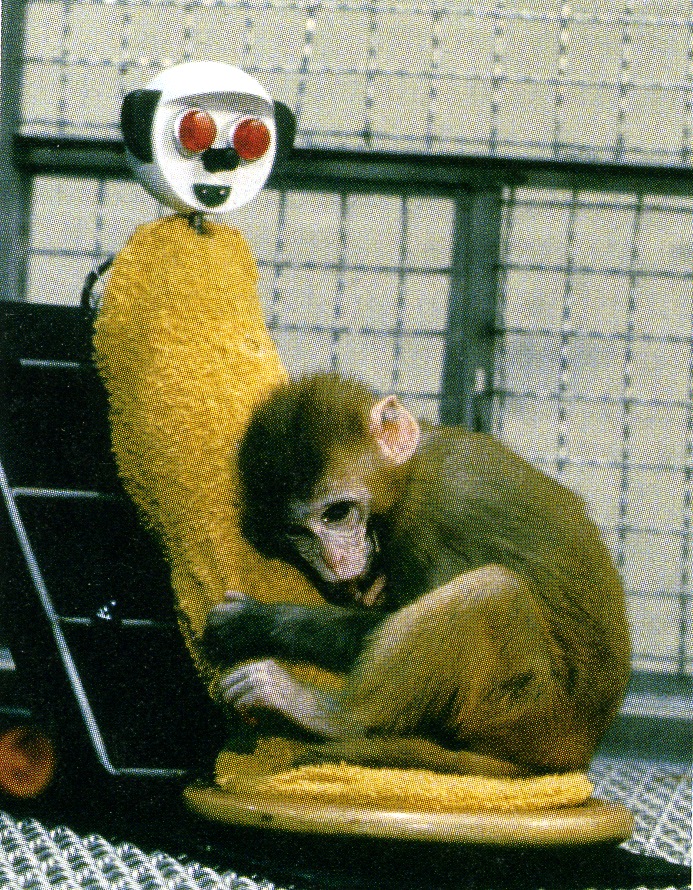Infant & Child Development
Summary
Developmental Issues
- Nature-Nurture Debate
Research Strategies
Pre-Natal Development
Zygotes to Fetuses
Challenges to Development
New Born Abilities
Reflexes
The Senses (see visual cliff)
Child Development
Physical and motor development
Cognitive Development (Piaget)
Language Development
Social Development (attachment)
(day care controversy)
(peer relationships)
Cultural Differences in child rearing
Developmental issues include:
Stability vs Change - do we remain much the same throughout life or do we transform?
Continuity vs Stages of change - assuming we do change is it gradual or do we go through qualitative stage changes?
and...
The Nature -Nurture Debate
A central debate in psychology that pertains to the origin of fundamental characteristics like personality and intelligence.
-Genetic/biological destiny vs. environmental shaping?
Nature and Nurture - while many people believe that only nature or nurture is relevant, others view them BOTH as having an influence on human development.
Research Strategies in Developmental Psychology
Case study Method
examining one person over a period of time enables understanding of how one goes from infancy to adulthood.Longitudinal Studies - are carried out to examine the same people at different times of development. The strength of this approach is that it follows the actual developed from t1 to tn however the disadvantage is that those select people may not be representative of most people, as in the case study method.
Cross-sectional studies - attempt to be more generalisable by looking at many people of various ages at the same time. Here comparisons are made across groups of people of different ages. The problem is though, that cohort effects might confound the results.
Cohort Effects - occur when people being compared have different environments or worlds in which they live.
E.g., people who are now 10 years old have internet and video games in comparison to people who are now 40 - they did not have those when they we 10.
Pre-Natal Development
Genetics - DNA > Chromosomes > Genes (alleles) ... & epigenetics ![]()
Conception to Birth - First the human starts out as a zygotes (0-2 weeks) then forms into an embryo (3 to 8 weeks) (40, 45, 60, 120 days) then into a fetus (9 to 39 weeks).
The Zygote is a collection of multiplying cells that are relatively undifferentiated. When it becomes implanted in the uterine wall is called an embryo where various body parts and organs are differentiated.
Hormones and other chemicals that pass through the placenta will potentially have an impact on the growing fetus. E.g., Testosterone may be secreted during this stage to provide the second stage of gender identity development.
Teratogens are substances that are toxic to the embryo or fetus and may lead to developmental deficiencies.
critical periods
![]()
E.g., Thalidomide was given to pregnant mothers for morning sickness from 1957 to 1961. It was soon found to cause birth defects such as phocomelia- limb deformities (hands without arms).
Rubella (German Measles) if mother contracts it prior 11th week can cause mental retardation, blindness and deafness, and heart problems.
Cat feces contain a unicellular parasite, toxoplasmosis, that can cause hydrocephalus (a condition in which the brain swells), mental retardation and anemia -3rd trimester.
Fetal Alcohol Syndrome - occurs when the mother consume large amounts of alcohol during (early) pregnancy. Symptoms are: stunted growth, facial deformities, & mental retardation.
Even for mothers who only have 2-3 drinks a day may have children who have deficits in: balance, dexterity & intelligence, attention, memory & math ability.
Neonatal Sensory & Perceptive abilities
At birth there are Reflexes several innate behaviours exist for neonates, including: grasping, rooting (feeding) and babinski (toes open then curl in - which is expected to reverse in time).
Many of thes abilities are examined through the habitution paradgim, where they see how long they pay attention to stimuli.
Auditory discrimination (and preference) - last few months in utero. New Borns 'prefer' their mother's voices and also stories, and music that they are familiar with.
Visual acuity is not great for infants they tend to focus best on near objects (8-10 inches).
Visual preference Within minutes of birth infants turn head towards faces or bull's-eyes over others. Ordered faces then scrambled faces were preferred. (Appears to be innate like other species).
Depth perception is present at 2 months when heart rate decrease for infants placed on "deep side" of visual cliff![]() .
.
Locate sounds in space (turn head to clicker @ 5 min) and prefer mother's voice to others'.
Also can distinguish between phonemes (e.g., ba , pa )
'Motherese' (parentese) is preferred (high pitched) along with Mozart over more discordant music.
Infants appear to be sensitive to number of objects through 'expectations' and time looking.
Developmental Trends
Physical and motor development is incredibly rapid where brain grows & becomes more complex.
Developmental trend tends to go cephalo-caudal and proximo-distal. This means from head to tail and center to periphery.
![]()
Children have irregular growth patterns alternative weight and height gains.
Later Brain development indicates later maturity of later evolutionary structures, i.e. frontal lobes-foresight, planning, abstract preparation.
Cognitive Development Jean Piaget 
-Built around notion of schemas or 'templates' for thinking. Patterns of thought are innate and unfold in a timely and order sequence:
The schemas go are used for assimilation of information into them, make sense of the world through our pre-existing categories of thought.
Thse schemas also under go accomodation where they themselves change or transform in time.
-This 'hard' stage model indicates that one moved forward through age-related transitions one way only (built from Kantian-Rationalist perspective regarding the forms of thinking as schemas).
1) Sensory motor (0-2) knowledge through sensing and moving things and self.
Gradually have the development of
object permanence and symbolic thought.
2) pre-Operational (2-7) many shortcomings to operational.
Still working on: Conservation & Reversibility, and trying to overcome egocentrism.
They tend to be dominated by Centration- a form of "tunnel vision" as seen in the task for Liquid Conservation number or Length also -i.e. play dough.
Egocentrism is also a characteristic that changes
3) Concrete Operational (7-11) thought emerges as these tasks are mastered.
Understanding of hierarchical classification emerges here.
Categorization--
reversibility
4) Formal Operational (12 +) thought is where one is able to master abstract logical and intellectual tasks. youtubeB
Reflections on Piaget's work:
General Support, sequence is verified but may be less homogeneous and greater variation in rate of change.
Changes in memory apparent too - Short Term Memory increases in capacity along with processing time and name retrieval, largely between ages of 7 and 12.
Lev Vygotsky -![]() Offered alternative model of cognitive and language development where the social world provides 'scaffolding' to extend the Zone of Proximal Development.
Offered alternative model of cognitive and language development where the social world provides 'scaffolding' to extend the Zone of Proximal Development.
We interact with people and artifacts (objects and scripts about objects) through which we learn tothink through our culture and we are nurtured by others (psychosocial) in that development.
Hence, through cultural expereince we internalize meaning, beginning with private speech, then thinking
Language Development
Chomsky vs
. Skinner: Language is an innate capacity of learning the syntax or rules of grammar Or... It is a set of behaviours that are conditioned as tacts. Associations between objects and names or behaviours. eg pigeons reading?Milestones of development, including babbling, first words, telegraphic, multiword, and complete sentences.
-these suggest an
innate sequence of eventsWented, goed, runned, ...[see 100A]
Social Development
Temperament - characteristic mood and activity
Appears to remain stable over time (Kagan et. al, 1992)
Harlows (1962) Early emotional attachment was believed to be formed during cuddling with mother.

Studies monkey with 'wire' or 'cloth' mothers and found they preferred the cloth, in spite of food.
Contact Comfort is believed to exist between mother and infant, established basic emotional responsiveness.
John Bowlby first developed the concept of
Attachment -
an affectionate emotional bonding between the infants and their mothers (caregivers).
Mary Salter Ainsworth - studied the active and complex interactions between mothers & children. -Found styles of attachment through strange-situation
Separation anxiety - emotional distress that occurs in infants when they are removed or separated from the people with whom they are "attached" (8-28 months)
1. Secure Attachment is seen when child plays & explores then is upset when mother left, but calmed by return. Resilient with high self esteem as toddler and good social skills more close friends in late childhood.
2. Anxious-Ambivalent is characterised by anxiety even when mother is near, protesting excessively when she leaves, & not comforted when she returns.
3. Avoidant Attachment - Generally plays alone and is not too comforted when mother returns
Bowlby (1967 / 73)
Insecure attachment.
Normal Parenting
does not seriously affect attachment, more extreme styles tend to lead to
differences, as seen across cultures.
However, ...Abusive, erratic and neglectful parenting may have an impact on child's attachment. Child's temperament may lead them toward anxious attachment.
Meta analysis by Van Ijzendoorn & Kroonberg (1998) shows
| # of studies | Country | Secure % | Avoidant % | Anxious/Ambivalent % |
| 1 | UK | 75 | 22 | 3 |
| 3 | Germany | 57 | 35 | 8 |
| 4 | Netherlands | 67 | 26 | 7 |
| 1 | Sweden | 74 | 22 | 4 |
| 2 | Japan | 68 | 5 | 27 |
| 2 | Isreal | 64 | 7 | 29 |
| 18 | USA | 65 | 21 | 14 |
| 1 | China | 50 | 25 | 25 |
| 32 | mean | 65 | 21 | 14 |
Separation Anxiety across cultures
Kagan (1976) reports small differences in age of maximum separation anxiety across culturesAfrican Bushmen 15 months
Antiguans (Guatemala) 10 months
Kibbutzniks (Israel) 14 months
Mayans (Guatemala) 16 months
Cultural Differences in child rearing
- sleep patterns, nursing through night while sleeping with mother or sleep independently in a crib.
-age of sitting and walking in Kipsigis people of Kenya and in Jamaica is earlier than in America due to exercising walking reflex.
...Ache of Paraguay keep children on back arms length- walk average 1 year later!
![]()
Romanian Orphans first 1-2 years adopted securely attached however, later adopted children were less so well attached. This shows a critical period for attachment.
Day Care Controversy
does day care lead to attachment problems? It appears that >20 hours a week of non-maternal care has higher risk of insecure attachment.-Quality of care is important!
-we have an evolutionary need to for contact comfort and social learning as other animals do for imprinting (look for mother') during a critically sensitive period.
This is related to basic trust wtihin the Eriksonisn model (which we will look at in the next section)
Recently cuddle therapy has emerged as a form of bringing back this contact comfort among adults as a forms of health psycholgy and psychotherapy. More later.....in therapies